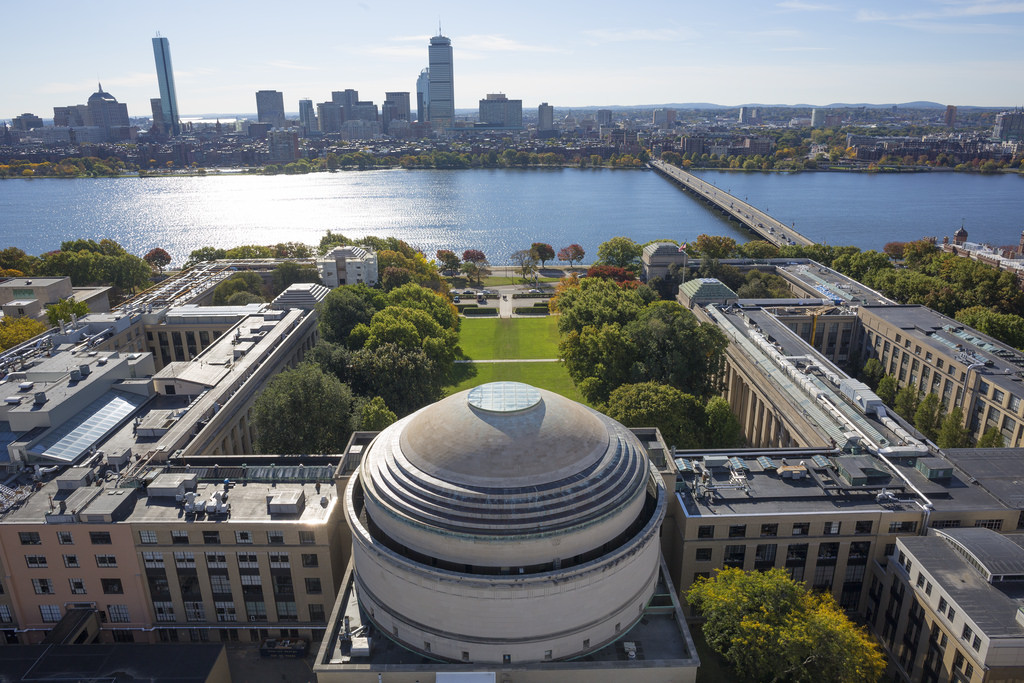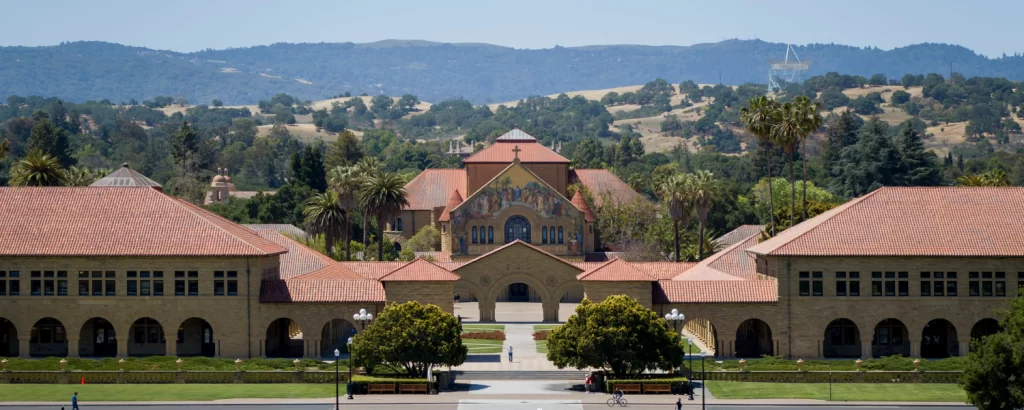
In the fast-paced world of technology and innovation, the Institute of Technology (IoTs) plays a pivotal role in shaping the future. These institutions serve as hubs for education, research, and collaboration, driving advancements in various fields and contributing to societal progress. Let’s delve deeper into the significance of Institutes of Technology and their impact on the modern world.
- Educational Excellence: Institutes of Technology are renowned for offering high-quality education in science, technology, engineering, and mathematics (STEM) disciplines. They provide rigorous academic programs, state-of-the-art facilities, and expert faculty members who impart knowledge and skills essential for success in today’s technology-driven society.
- Research and Innovation: One of the primary functions of Institutes of Technology is to conduct cutting-edge research and foster innovation. Through partnerships with industry, government agencies, and other academic institutions, IoTs undertake research projects aimed at solving real-world problems, developing new technologies, and pushing the boundaries of human knowledge.
- Entrepreneurship and Startups: IoTs play a vital role in nurturing entrepreneurial talent and fostering a culture of innovation and creativity. Many IoTs offer programs and resources to support aspiring entrepreneurs, including incubators, accelerators, and entrepreneurship centers. These initiatives help students and researchers turn their ideas into viable businesses and contribute to economic growth and job creation.
- Industry Collaboration: Institutes of Technology collaborate closely with industry partners to address industry needs, drive innovation, and facilitate technology transfer. Industry-sponsored research projects, internships, and collaborative programs provide students with real-world experience and opportunities to work on industry-relevant projects, while also enabling companies to access the latest research and talent pool.
- Global Impact: Institutes of Technology have a global reach and influence, attracting students, researchers, and faculty members from around the world. They contribute to international collaboration and cooperation, sharing knowledge, expertise, and resources to tackle global challenges such as climate change, healthcare, energy, and sustainability.
- Lifelong Learning and Continuing Education: IoTs offer lifelong learning and continuing education programs to professionals seeking to enhance their skills and stay abreast of advancements in their fields. These programs include online courses, workshops, seminars, and certificate programs, providing flexible learning opportunities for individuals at all stages of their careers.
Here is a list of some of the world’s best Institutes of Technology:
- Massachusetts Institute of Technology (MIT) – United States
- Stanford University – United States
- California Institute of Technology (Caltech) – United States
- ETH Zurich – Swiss Federal Institute of Technology – Switzerland
- University of Cambridge – United Kingdom
- Imperial College London – United Kingdom
- National University of Singapore (NUS) – Singapore
- Tsinghua University – China
- University of Oxford – United Kingdom
- Georgia Institute of Technology (Georgia Tech) – United States
These institutions are renowned for their excellence in education, research, and innovation in various fields of science, technology, engineering, and mathematics (STEM). They attract top talent from around the world and contribute significantly to advancements in technology and societal progress.
1. Massachusetts Institute of Technology(MIT)

The Massachusetts Institute of Technology (MIT) is a prestigious private research university located in Cambridge, Massachusetts, United States. Established in 1861, MIT is renowned for its excellence in education, research, and innovation across various fields of science, engineering, technology, and management.
MIT is consistently ranked among the top universities globally and is known for its rigorous academic programs, cutting-edge research, and entrepreneurial culture. The university offers undergraduate, graduate, and doctoral programs, with a focus on interdisciplinary collaboration and hands-on learning.
At MIT, students have the opportunity to work alongside world-class faculty members who are leading experts in their respective fields. The university’s research centers and laboratories are at the forefront of groundbreaking discoveries and advancements in areas such as artificial intelligence, biotechnology, renewable energy, and space exploration.
MIT has a vibrant campus community that fosters creativity, collaboration, and innovation. The university is home to numerous student organizations, clubs, and activities, providing students with opportunities to pursue their interests, engage in community service, and develop leadership skills.
One of MIT’s notable features is its strong emphasis on entrepreneurship and innovation. The university’s Martin Trust Center for MIT Entrepreneurship supports aspiring entrepreneurs with resources, mentorship, and funding to launch startups and commercialize their innovations.
MIT’s proximity to the thriving innovation ecosystem of Boston and Cambridge provides students with access to internship and job opportunities at leading companies, startups, and research institutions in the area.
Overall, the Massachusetts Institute of Technology is a world-class institution dedicated to pushing the boundaries of knowledge, solving complex global challenges, and preparing students to make a positive impact on the world.
2. Stanford University

Stanford University is a prestigious private research university located in Stanford, California, United States. Founded in 1885 by Leland Stanford and his wife, Jane Stanford, in memory of their son, the university has since become one of the world’s leading institutions of higher education.
Stanford is renowned for its academic excellence, innovative research, and entrepreneurial spirit. The university offers a wide range of undergraduate, graduate, and professional degree programs across seven schools, including the School of Humanities and Sciences, the School of Engineering, the Graduate School of Business, and the School of Medicine.
At Stanford, students have the opportunity to learn from world-class faculty members who are leading experts in their fields. The university’s faculty includes Nobel laureates, Pulitzer Prize winners, MacArthur Fellows, and members of prestigious academic societies.
One of Stanford’s key strengths is its commitment to interdisciplinary collaboration and cross-disciplinary research. The university’s interdisciplinary institutes and centers bring together faculty and students from different academic backgrounds to tackle complex challenges and address pressing societal issues.
Stanford is also known for its vibrant campus community and a rich array of extracurricular activities, clubs, and organizations. Students can participate in a wide range of academic, cultural, athletic, and social activities, contributing to a dynamic and inclusive campus environment.
In addition to its academic programs, Stanford is home to cutting-edge research centers and facilities that conduct research in areas such as artificial intelligence, biotechnology, renewable energy, and sustainability. The university’s proximity to Silicon Valley provides students with unique opportunities for internships, research collaborations, and networking with industry leaders and innovators.
Overall, Stanford University continues to uphold its reputation as a world-class institution dedicated to excellence in education, research, and service to society. With its commitment to innovation, collaboration, and impact, Stanford remains at the forefront of shaping the future of higher education and making a positive difference in the world.
3. California Institute of Technology (Caltech)

The California Institute of Technology, commonly known as Caltech, is a prestigious private research university located in Pasadena, California, United States. Founded in 1891, Caltech has earned a reputation as one of the world’s leading institutions for science and engineering education and research.
Caltech is renowned for its rigorous academic programs, cutting-edge research, and innovative spirit. The university offers undergraduate and graduate programs in science, engineering, mathematics, and other related fields, with a strong emphasis on hands-on learning and interdisciplinary collaboration.
At Caltech, students have the opportunity to work alongside world-class faculty members who are leading experts in their respective fields. The university’s small class sizes and low student-to-faculty ratio foster close relationships between students and faculty, creating an environment conducive to learning and discovery.
One of Caltech’s defining characteristics is its commitment to pushing the boundaries of knowledge and tackling some of the world’s most pressing challenges. The university’s research centers and institutes conduct groundbreaking research in areas such as space exploration, quantum science, renewable energy, and biotechnology.
Caltech’s campus community is vibrant and diverse, with students from all over the world coming together to pursue their passions and interests. The university offers a wide range of extracurricular activities, clubs, and organizations, providing students with opportunities to explore their interests outside of the classroom and develop leadership skills.
In addition to its academic programs and research activities, Caltech has a strong tradition of entrepreneurship and innovation. The university’s close ties to industry and its location in the heart of Southern California’s technology hub provide students with unique opportunities to engage with leading companies, startups, and research institutions.
Overall, the California Institute of Technology continues to uphold its reputation as a world-class institution dedicated to excellence in education, research, and innovation. With its focus on pushing the boundaries of knowledge and preparing students to make meaningful contributions to society, Caltech remains at the forefront of scientific and technological advancement.
4. ETH Zurich – Swiss Federal Institute of Technology

The Swiss Federal Institute of Technology, commonly referred to as ETH Zurich (Eidgenössische Technische Hochschule Zürich), is one of the world’s leading universities for technology and natural sciences. Founded in 1855, it is located in Zurich, Switzerland. ETH Zurich is renowned for its cutting-edge research and high-quality education across various disciplines, including engineering, mathematics, computer science, physics, chemistry, biology, and architecture.
ETH Zurich has consistently been ranked among the top universities globally and is known for its strong emphasis on both theoretical and applied research. It fosters a collaborative and interdisciplinary environment, attracting top students and researchers from around the world.
In addition to its academic excellence, ETH Zurich has produced numerous Nobel laureates, including Albert Einstein, who was a professor at the university from 1912 to 1914. The university’s alumni and faculty have made significant contributions to science, technology, industry, and society at large.
5. University of Cambridge

The University of Cambridge is one of the world’s oldest and most prestigious universities. Located in Cambridge, England, it was founded in 1209 and has a rich history spanning over eight centuries. Cambridge is renowned for its academic excellence and has consistently ranked among the top universities globally.
The university is composed of numerous colleges, each with its own unique history and culture. These colleges provide residential accommodation, tutorial teaching, and other academic and social activities for students. Cambridge offers a wide range of undergraduate and postgraduate programs across various disciplines, including arts, humanities, sciences, engineering, medicine, and social sciences.
Cambridge is known for its rigorous academic standards, world-class faculty, and cutting-edge research facilities. It has produced numerous notable alumni, including renowned scientists, Nobel laureates, writers, politicians, and leaders in various fields.
The university’s academic and research contributions have had a profound impact on society, with breakthroughs in areas such as physics, biology, medicine, literature, and philosophy. Cambridge continues to be a hub of intellectual innovation and excellence, attracting top students and scholars from around the globe.
6. Imperial College London

Imperial College London is a world-renowned university specializing in science, engineering, medicine, and business. It was founded in 1907 through the merger of three existing colleges in London. Imperial consistently ranks among the top universities globally for its academic excellence, research output, and innovation.
The university is located in the heart of London, with campuses in South Kensington, White City, and Hammersmith. Imperial offers a wide range of undergraduate, postgraduate, and doctoral programs across various disciplines, including engineering, natural sciences, medicine, business, and computing.
Imperial College London is particularly well-known for its strong emphasis on research and innovation. It houses numerous research centers and institutes focusing on areas such as energy, healthcare, environmental sustainability, and advanced technology. The university has a strong track record of collaborating with industry and government to address real-world challenges and translate research into practical solutions.
Imperial has a diverse and vibrant community of students and faculty from around the world. The university provides state-of-the-art facilities, world-class teaching, and opportunities for interdisciplinary collaboration, fostering a dynamic learning environment.
The alumni of Imperial College London include Nobel laureates, leaders in industry and government, entrepreneurs, and pioneers in science and technology. The university continues to make significant contributions to society through its research, education, and innovation initiatives.
7. National University of Singapore (NUS)

The National University of Singapore (NUS) is one of Asia’s leading universities and is consistently ranked among the top universities globally. Established in 1905, it is Singapore’s oldest and largest university. NUS offers a comprehensive range of undergraduate and postgraduate programs across various disciplines, including arts, social sciences, engineering, medicine, business, and law.
The university is located in Singapore and comprises three campuses: Kent Ridge, Bukit Timah, and Outram. NUS is known for its world-class faculty, cutting-edge research facilities, and vibrant campus life. It has a diverse student body, with students and faculty from over 100 countries, fostering a rich multicultural environment.
NUS is committed to excellence in research and innovation and has established numerous research centers and institutes focusing on areas such as biomedical sciences, engineering, sustainability, and Asian studies. The university collaborates extensively with industry, government, and other academic institutions to address global challenges and drive economic growth and social development.
In addition to its academic and research achievements, NUS has a strong reputation for producing graduates who are well-equipped to succeed in the global marketplace. The university provides students with opportunities for internships, industry placements, and overseas exchange programs, preparing them for leadership roles in their chosen fields.
NUS has a proud tradition of alumni who have made significant contributions to Singapore and the world. Its graduates include leaders in government, business, academia, and the arts, as well as Nobel laureates and prominent figures in various fields. The university continues to play a crucial role in advancing knowledge, fostering innovation, and shaping the future of Singapore and beyond.
8. Tsinghua University

Tsinghua University is one of China’s most prestigious and influential universities, located in Beijing. Established in 1911, Tsinghua is known for its rigorous academic standards, cutting-edge research, and strong emphasis on science, engineering, and technology.
Originally founded as a preparatory school for students to study abroad in the United States on government scholarships, Tsinghua has evolved into a comprehensive research university offering a wide range of undergraduate, postgraduate, and doctoral programs across various disciplines, including engineering, natural sciences, social sciences, humanities, business, and law.
Tsinghua University is recognized globally for its outstanding faculty, many of whom are leading experts in their fields and have made significant contributions to academic research and innovation. The university’s research activities span a wide range of areas, from fundamental science and engineering to applied research addressing real-world challenges.
The university’s campus, located in northwest Beijing, is known for its beautiful grounds and state-of-the-art facilities. Tsinghua provides students with a vibrant and stimulating learning environment, fostering intellectual curiosity, critical thinking, and creativity.
Tsinghua University has a strong commitment to internationalization and collaboration with leading universities and research institutions worldwide. It offers various exchange and cooperation programs, attracting talented students and scholars from around the globe and promoting cross-cultural understanding and collaboration.
The alumni of Tsinghua University include numerous prominent figures in Chinese society, including government officials, business leaders, scientists, engineers, and entrepreneurs. The university’s graduates play a crucial role in driving China’s economic and technological development and contributing to global progress and innovation.
9. University of Oxford

The University of Oxford is one of the oldest and most prestigious universities in the world, located in Oxford, England. Established in the 12th century, it has a rich history and tradition of academic excellence, making it one of the leading institutions globally.
Oxford is a collegiate university, consisting of 39 colleges and a range of academic departments. Each college has its own unique history, architecture, and academic programs, providing students with a supportive and intellectually stimulating environment.
The university offers a wide range of undergraduate and postgraduate programs across various disciplines, including arts, humanities, sciences, social sciences, engineering, and medicine. Oxford is known for its tutorial-based teaching method, which involves small-group discussions and close interaction between students and tutors, fostering critical thinking, independent learning, and academic excellence.
Oxford is renowned for its world-class faculty, who are leading experts in their fields and actively engaged in cutting-edge research and scholarship. The university is home to numerous research centers and institutes focusing on areas such as medicine, humanities, social sciences, and natural sciences.
Oxford has produced numerous notable alumni, including world leaders, Nobel laureates, scientists, writers, and entrepreneurs. The university’s alumni network is vast and influential, with graduates making significant contributions to society and shaping the course of history.
Oxford continues to be at the forefront of research, innovation, and education, attracting top students and scholars from around the world. It remains committed to its core values of academic excellence, diversity, and inclusivity, and continues to play a leading role in advancing knowledge and understanding for the betterment of humanity.
10. Georgia Institute of Technology (Georgia Tech)

The Georgia Institute of Technology, commonly referred to as Georgia Tech, is a leading public research university located in Atlanta, Georgia, United States. Established in 1885, Georgia Tech is known for its strong focus on science, technology, engineering, and mathematics (STEM) education and research.
Georgia Tech offers a wide range of undergraduate, graduate, and doctoral programs across various disciplines, including engineering, computing, business, design, sciences, and liberal arts. The university is organized into six colleges and contains numerous research centers and institutes focused on areas such as robotics, biotechnology, nanotechnology, sustainable energy, and cybersecurity.
Georgia Tech is renowned for its innovative and interdisciplinary approach to education and research. The university emphasizes hands-on learning, entrepreneurship, and collaboration between students, faculty, and industry partners. Georgia Tech’s proximity to Atlanta’s thriving technology and business ecosystem provides students with unique opportunities for internships, co-ops, and partnerships with leading companies and organizations.
Georgia Tech is also known for its strong commitment to diversity and inclusion. The university has a diverse student body, faculty, and staff from across the United States and around the world. Georgia Tech actively promotes diversity, equity, and inclusion through various initiatives, programs, and support services.
The alumni of Georgia Tech include numerous prominent figures in industry, government, academia, and entrepreneurship. Georgia Tech graduates are known for their technical expertise, leadership skills, and entrepreneurial mindset, making significant contributions to society and driving innovation and economic growth.
Overall, Georgia Tech continues to be a global leader in STEM education, research, and innovation, advancing knowledge and solving complex challenges to improve the lives of people around the world.
11. Stevens institute of technology

Stevens Institute of Technology is a private research university located in Hoboken, New Jersey, United States. Founded in 1870, Stevens is one of the oldest technological universities in the country. The university offers a wide range of undergraduate and graduate programs in engineering, science, business, and humanities.
Stevens is known for its strong emphasis on experiential learning, entrepreneurship, and interdisciplinary research. The university’s proximity to New York City provides students with access to numerous internship and career opportunities in leading industries such as finance, technology, and engineering.
Stevens Institute of Technology is home to world-class faculty members who are experts in their fields and actively engaged in cutting-edge research and innovation. The university’s research centers and labs focus on areas such as artificial intelligence, cybersecurity, renewable energy, and sustainable infrastructure.
Stevens takes pride in its vibrant campus community, which offers a rich array of extracurricular activities, clubs, and organizations. Students have the opportunity to participate in research projects, industry collaborations, community service initiatives, and entrepreneurial ventures.
Overall, Stevens Institute of Technology continues to uphold its legacy of excellence in education, research, and innovation, preparing students to become leaders in their fields and make meaningful contributions to society.
12. Rochester institute of technology

The Rochester Institute of Technology (RIT) is a private research university located in Rochester, New York, United States. Established in 1829 as the Rochester Athenaeum, the institution later merged with the Mechanics Institute in 1891 to become the Rochester Institute of Technology.
RIT is renowned for its strong emphasis on technology, engineering, design, and the arts. The university offers a wide range of undergraduate and graduate programs across various disciplines, including engineering, computing, business, science, and liberal arts.
One of RIT’s distinguishing features is its commitment to experiential learning and hands-on education. The university’s cooperative education (co-op) program provides students with valuable real-world experience through paid work placements with industry partners. This practical experience complements classroom learning and helps students develop the skills and knowledge needed to succeed in their chosen fields.
RIT is also known for its strong focus on innovation and entrepreneurship. The university’s Center for Student Innovation and numerous entrepreneurship programs and initiatives support aspiring entrepreneurs in launching startups, commercializing their inventions, and pursuing their creative ideas.
In addition to its academic programs, RIT is home to cutting-edge research centers and facilities that conduct research in areas such as imaging science, cybersecurity, sustainable manufacturing, and digital media.
RIT’s campus community is vibrant and diverse, with students from all 50 states and over 100 countries. The university offers a wide range of extracurricular activities, clubs, and organizations, providing students with opportunities to pursue their interests, engage in community service, and develop leadership skills.
Overall, the Rochester Institute of Technology is a leading institution dedicated to preparing students for successful careers in a rapidly changing world. With its focus on technology, innovation, and experiential learning, RIT continues to make significant contributions to education, research, and societal progress.
Conclusion
Institutes of Technology are at the forefront of driving innovation, education, and progress in the modern world. Through their focus on educational excellence, research and innovation, entrepreneurship, industry collaboration, global impact, and lifelong learning, IoTs are shaping the future and empowering individuals to make meaningful contributions to society. As we navigate the complexities of the 21st century, Institutes of Technology will continue to play a vital role in shaping a brighter and more technologically advanced future for all.
What are Institutes of Technology?
There are several top institutes of technology globally, including Massachusetts Institute of Technology (MIT), Stanford University, California Institute of Technology (Caltech), ETH Zurich, University of Cambridge, Imperial College London, and others.
What makes an Institute of Technology one of the best?
The best Institutes of Technology are characterized by their academic excellence, cutting-edge research, state-of-the-art facilities, renowned faculty members, strong industry partnerships, and a vibrant campus community.
How are the rankings of Institutes of Technology determined?
Rankings of Institutes of Technology are often based on factors such as academic reputation, faculty expertise, research output, student-to-faculty ratio, graduation rates, employment outcomes, and student satisfaction.
What are some of the top Institutes of Technology in the world?
Some of the top Institutes of Technology globally include Massachusetts Institute of Technology (MIT), Stanford University, California Institute of Technology (Caltech), ETH Zurich, and University of Cambridge.
What programs are offered at Institutes of Technology?
Institutes of Technology offer a wide range of undergraduate, graduate, and doctoral programs in fields such as engineering, computer science, mathematics, natural sciences, business, and humanities.
How do Institutes of Technology contribute to innovation and research?
Institutes of Technology play a crucial role in driving innovation and research by conducting groundbreaking research, fostering entrepreneurship, collaborating with industry partners, and providing students with hands-on learning opportunities.
What opportunities are available to students at Institutes of Technology?
Students at Institutes of Technology have access to world-class faculty, state-of-the-art facilities, research opportunities, internship and co-op programs, entrepreneurship initiatives, and a wide range of extracurricular activities and clubs.
How can I apply to an Institute of Technology?
Prospective students can apply to Institutes of Technology through their admissions office or online application portal. Requirements may vary depending on the institution and program, but typically include academic transcripts, standardized test scores, letters of recommendation, and personal statements.




